-
Take-awayOpen
-
Miniature railwayOpen
-
Kids CarsOpen
-
Toboggan runClosed
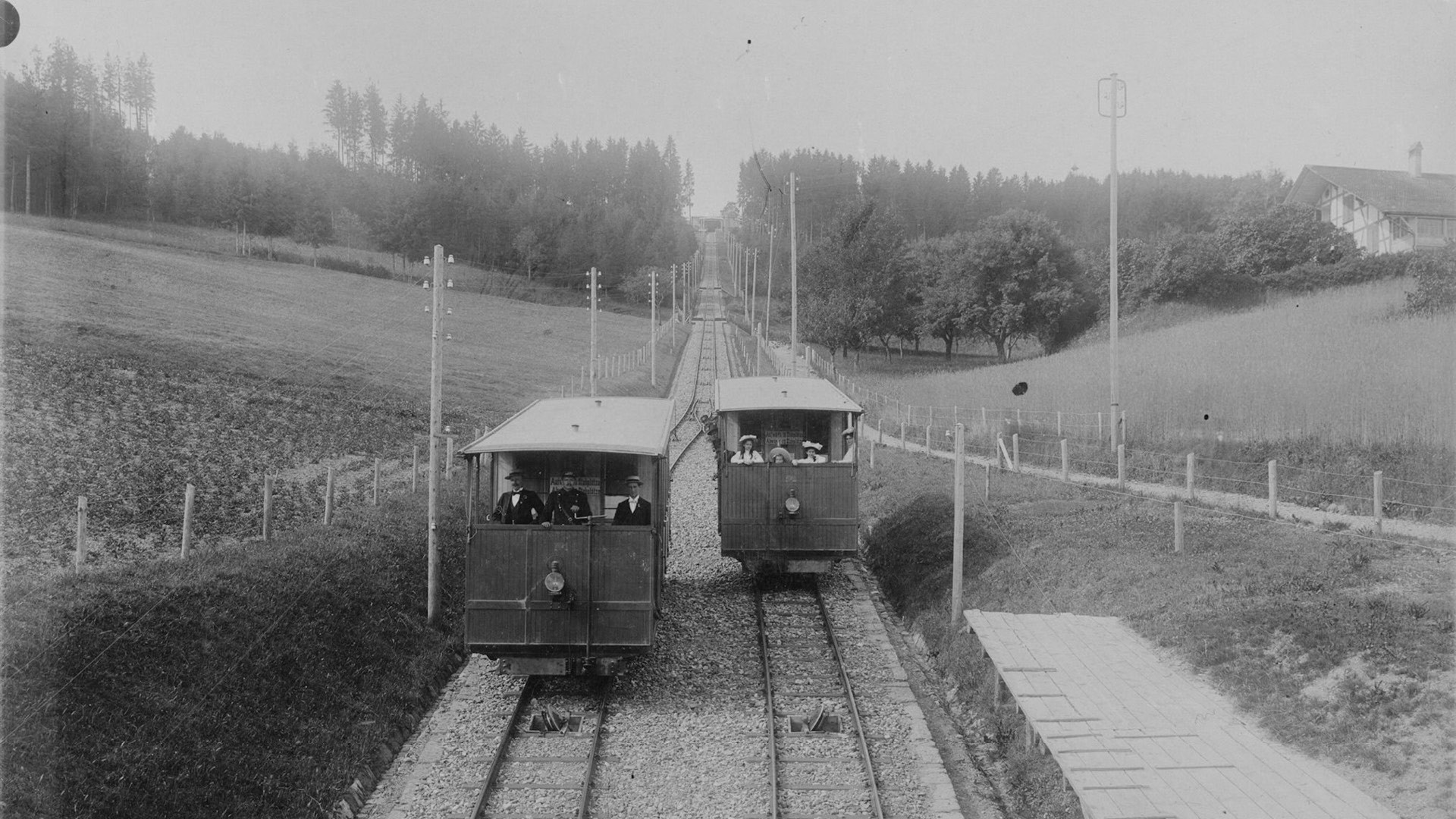
Traveling back in time
The Gurtenbahn opened on September 12, 1899. It has developed into a modern railway company that no one in Bern would want to be without. It provides access to the car-free local recreation area and, thanks to its modern panoramic carriages, has been offering breathtaking views on the way up the mountain since 1999. The Gurtenbahn transports around 1,000,000 people safely, quickly, and comfortably to Bern's local mountain every year. In 5 minutes, you are «out of the city.»
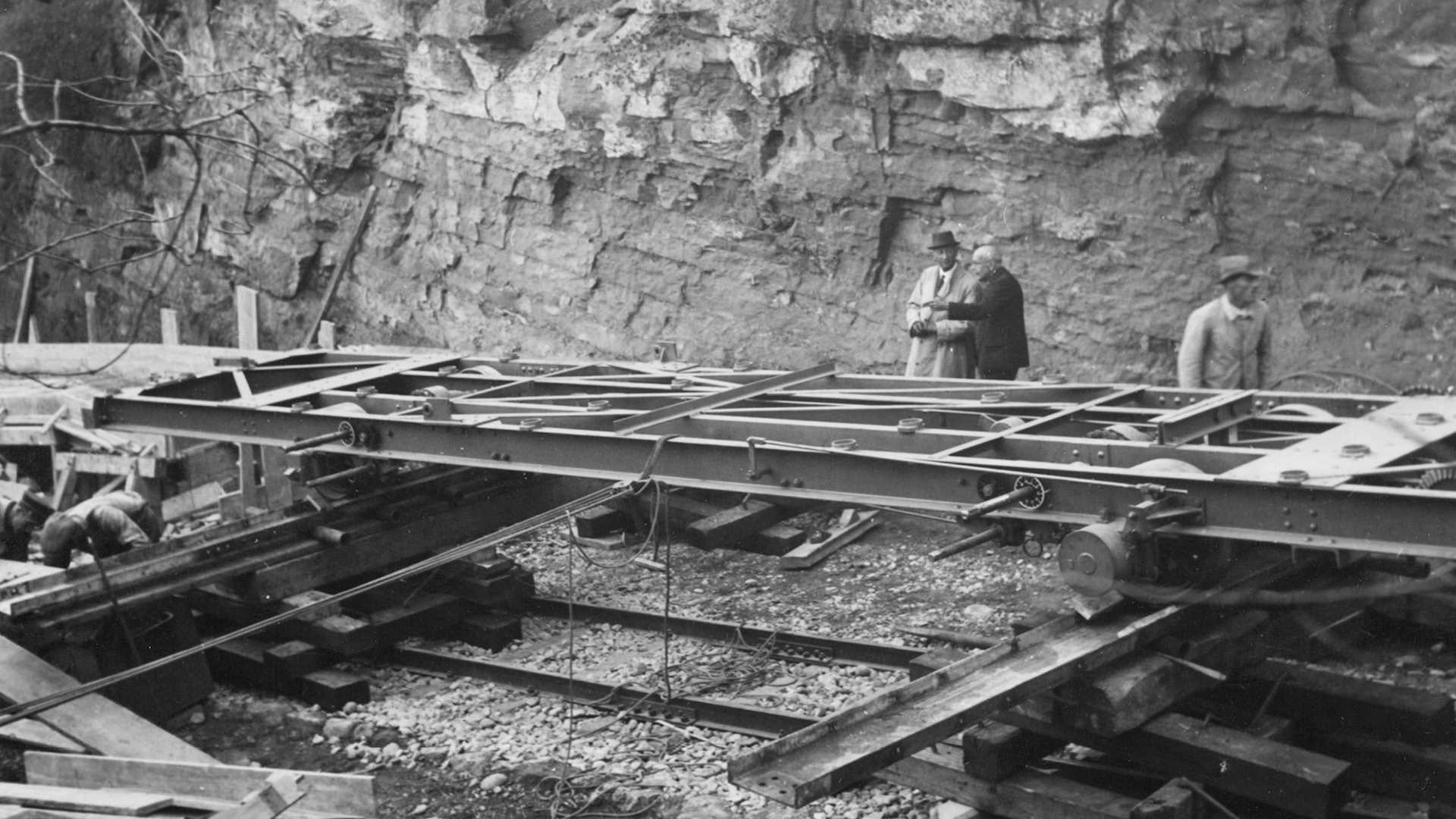
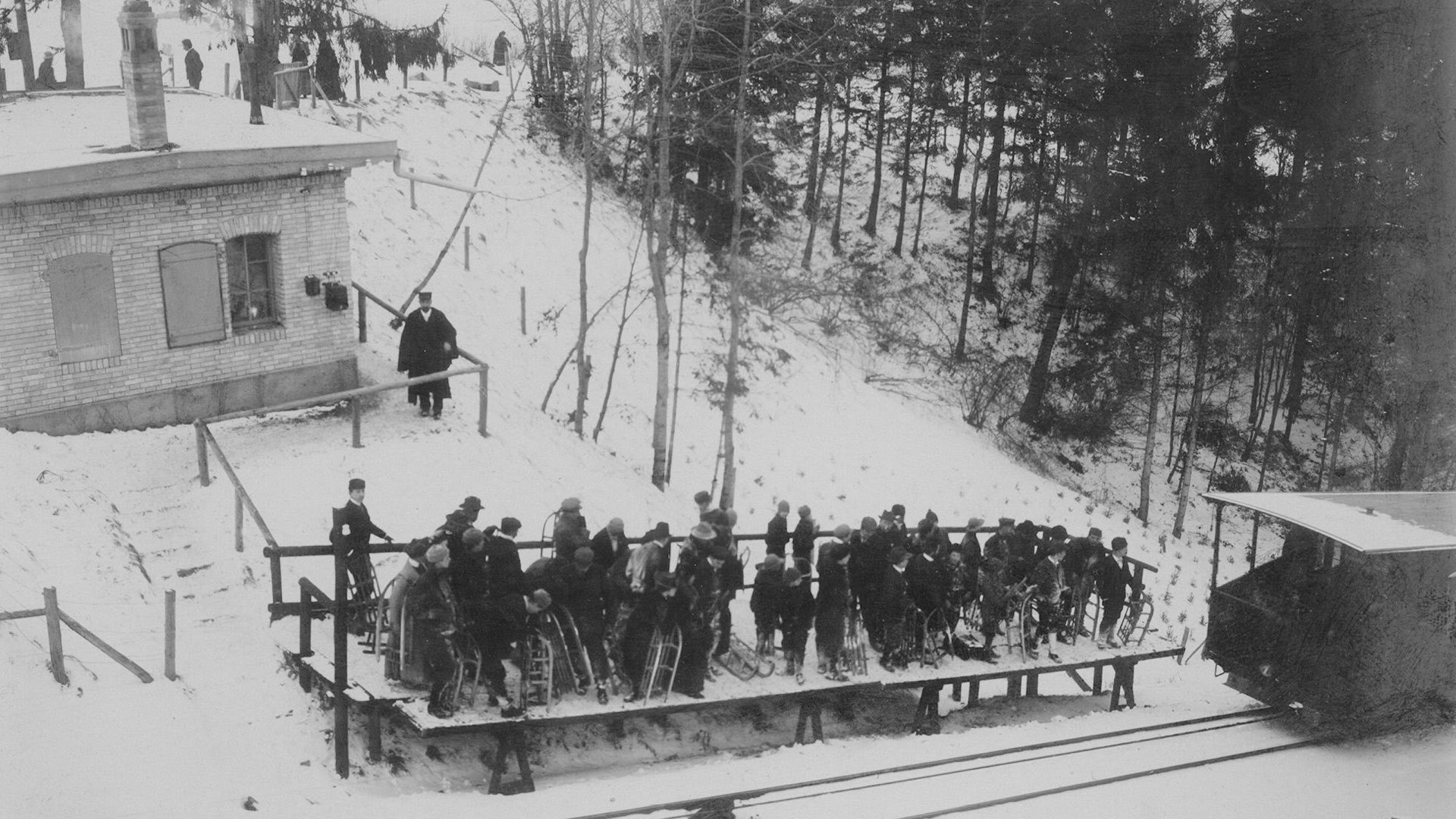
Stumbling block at the beginning
The railway was completed and ready for use at the beginning of July 1899, but could not operate due to a lack of electrical power. It was not until September 12 that operations could begin. By the end of the year, a total of 33,500 people had been transported. Unfortunately, in 1907, the landowner banned skiing and sledding on his property on the Gurten. As a result, the Gurten came to be seen as unsuitable for sports.
The First World War
The First World War led to an extraordinary decline in passenger numbers. In 1915, there were only 33,400 trips. As a result, the return fare was reduced from CHF 1.50 to CHF 1.00 in 1916. This resulted in increased frequency and higher revenues. This had an impact on staff salaries, which were increased in line with the success of the Gurtenbahn.
A new frequency record was set in 1935, with 131,700 trips counted on the Gurten. In addition, bridge reinforcements and electric car heating were installed in the stations in the same year.
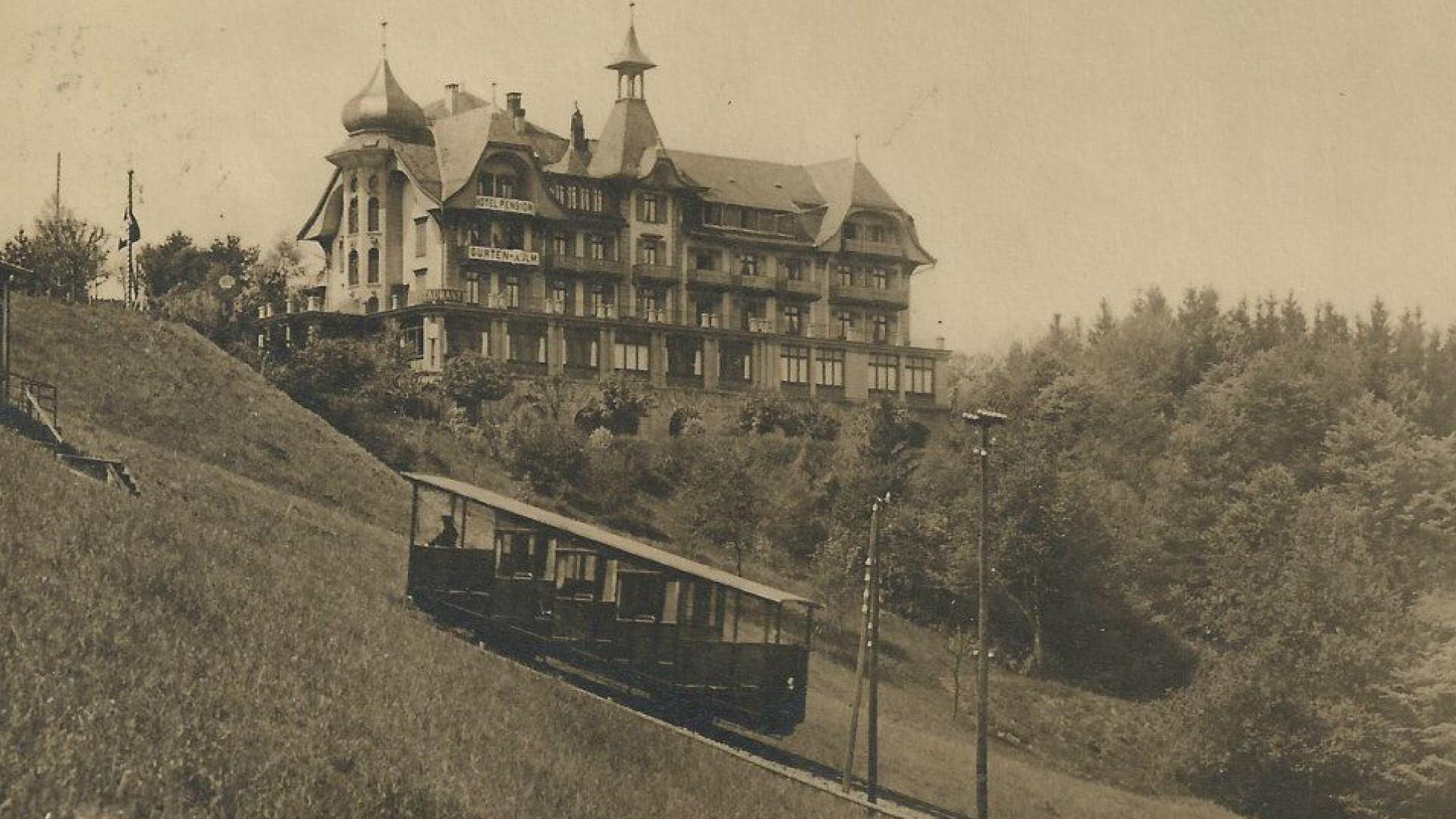
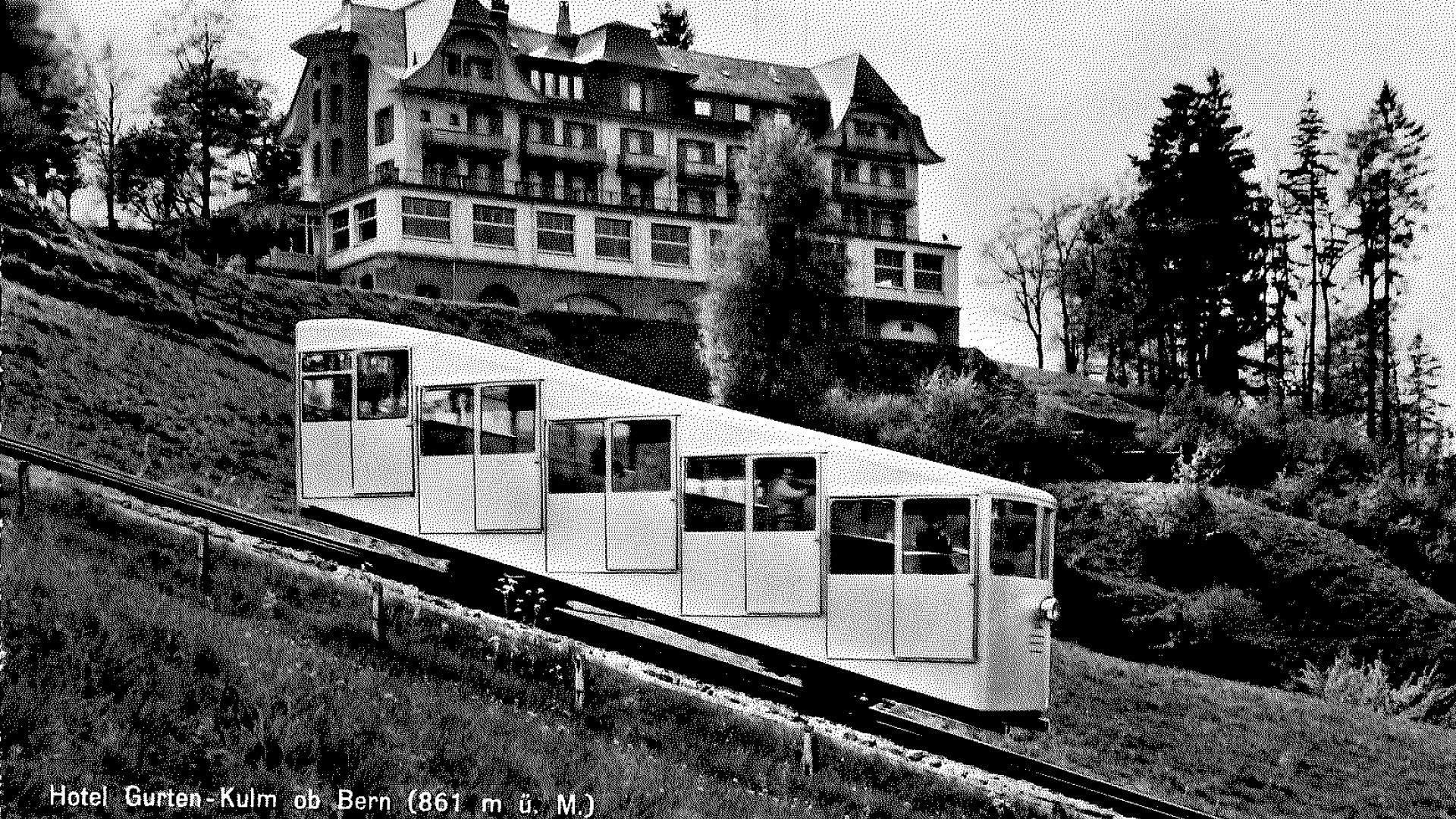
Major renovation after 45 years of operation
After 45 years of operation, radical renovations were carried out in 1944: new cars for 100 instead of 60 passengers, light metal boxes, a more powerful drive motor, a reduced travel time from seven to five minutes, remote control from the car, reinforcement of the superstructure, and a complete renovation of the valley station. Capacity increased from 400 to 700 passengers per hour, and even to 850 per hour during sporting events.
Despite the interruption in service due to the renovation, 196,000 people were transported, a record since the cable car was built. The costs of the renovation were covered by the company's own funds and a loan from the municipality of Bern. This led to the first fare increase: a return trip cost CHF 1.20 instead of CHF 1.
Record figures at high and low points
A new record was set on Swiss National Day in 1946. Thanks to the capacity of the new railway, 5,800 people were transported in a single day. A new maximum was reached in 1947 with 264,200 passengers transported. In 1956, just under nine years later, the Gurtenbahn recorded a new low of only 213,600 passengers. The administration studied a new concept for the Gurten.
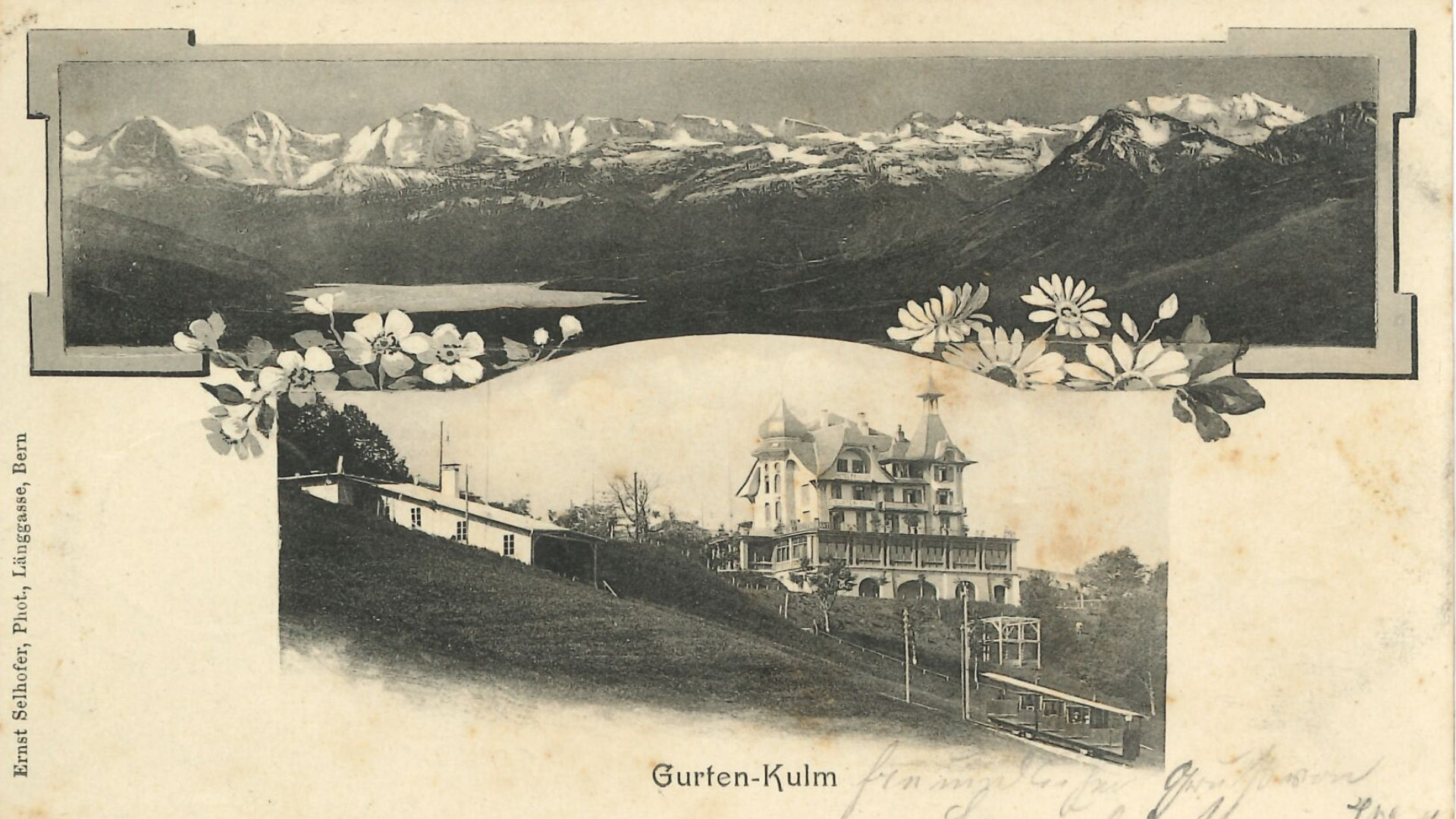
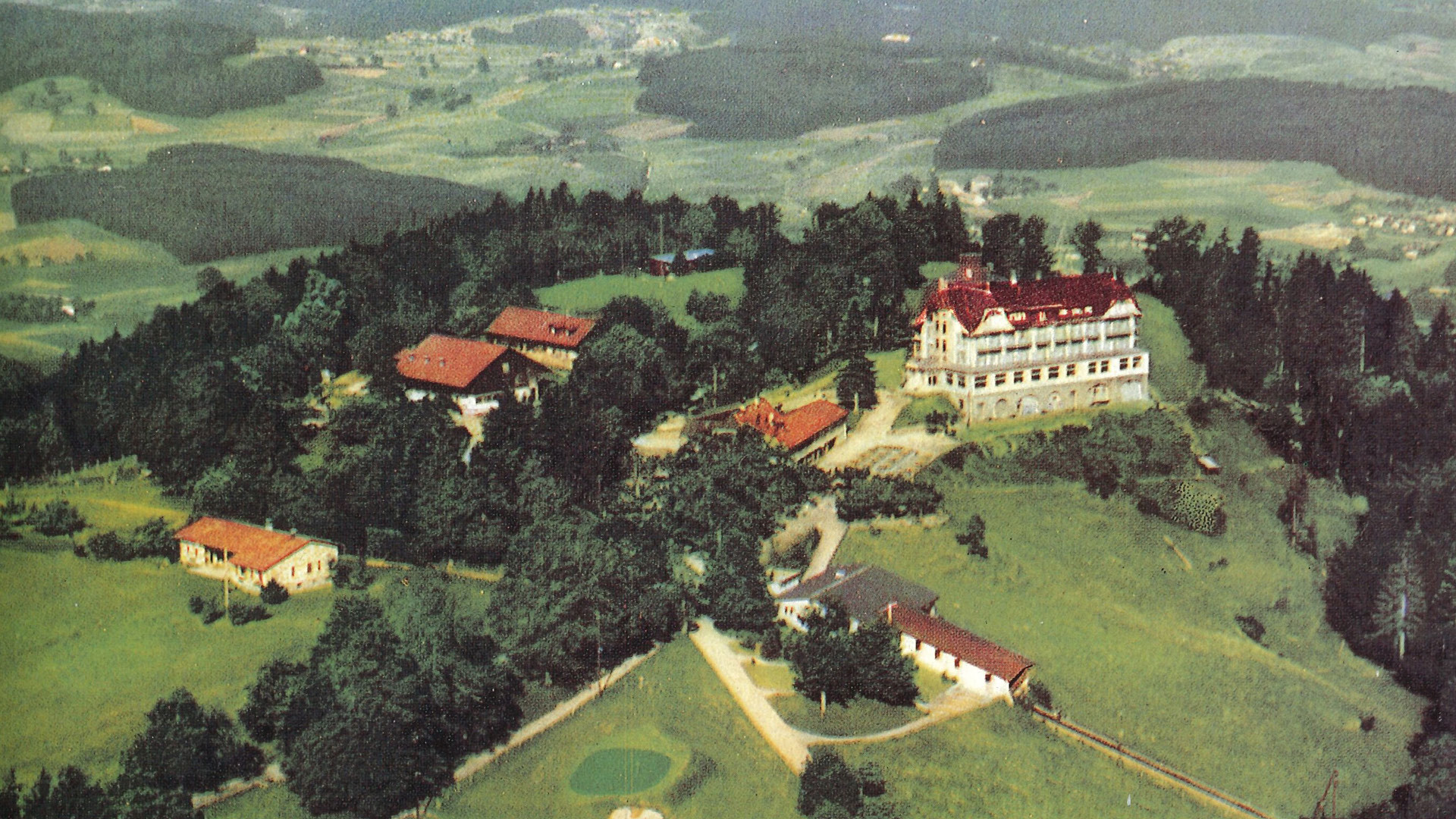
New approach
In mid-1959, W. Jöhr, deputy director of SVB, succeeded Dr. F. Bandi as operations director of the Gurtenbahn. The new Gurten concept approved by the municipal council came into effect. After the golf club moved away, the large Gurtenmatte area was made available to visitors.
The children's playground was redesigned. In addition, construction of the Gurten circular trail began and a general ban on cars was imposed.
To success with the miniature railway
In 1960, young people helped build the new children's playground with a miniature railway, play street, and miniature village. This led to a 30% increase in visitor numbers and prompted structural improvements to the hotel.
Just four years later, the miniature railway was extended with a tunnel. Plans were made for a comprehensive renovation of the operating facilities. The Gurten-Schwinget attracted 6,700 people, the highest summer attendance. In 1964, more than 400,000 people were transported for the first time in a single year.
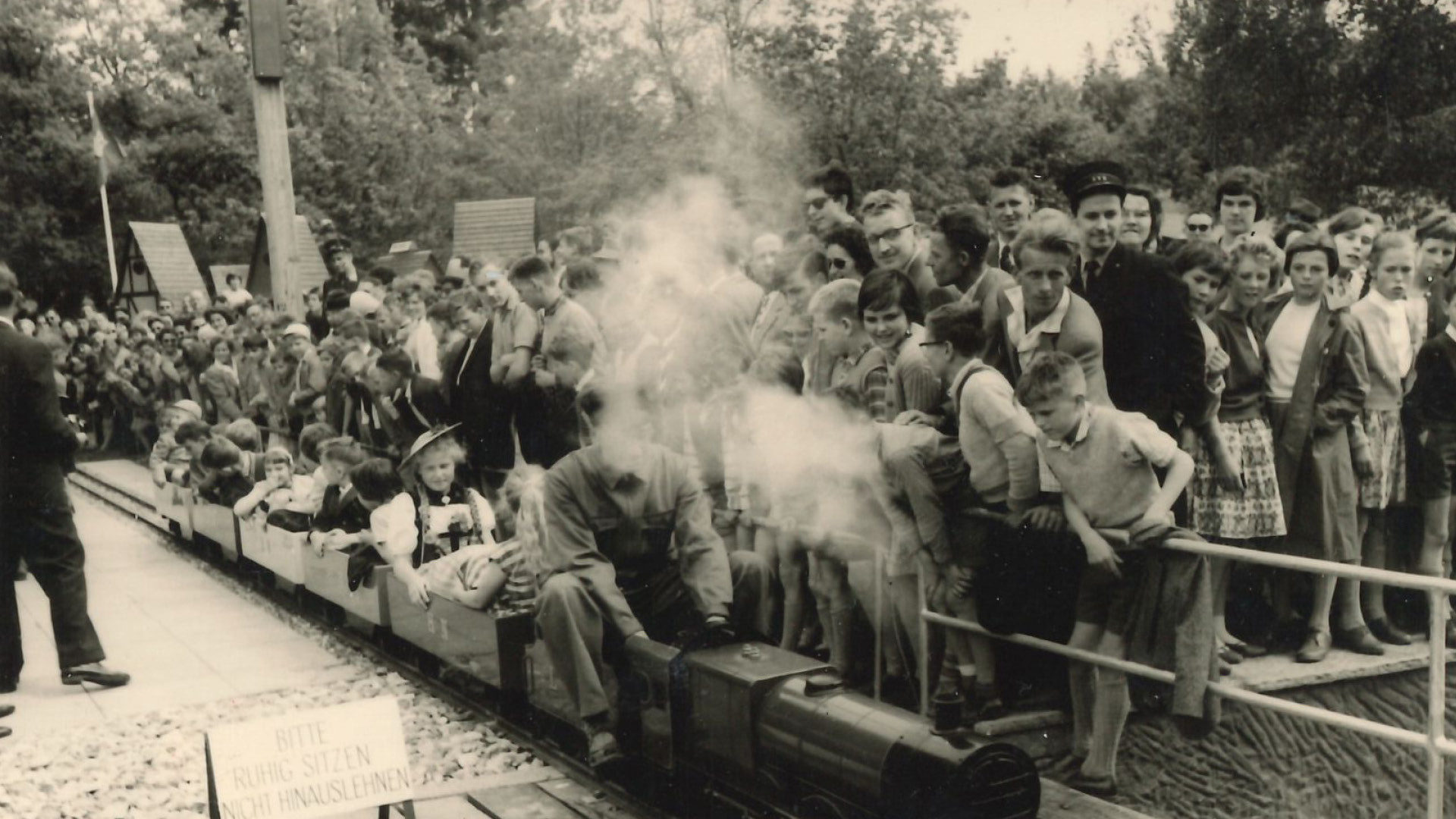
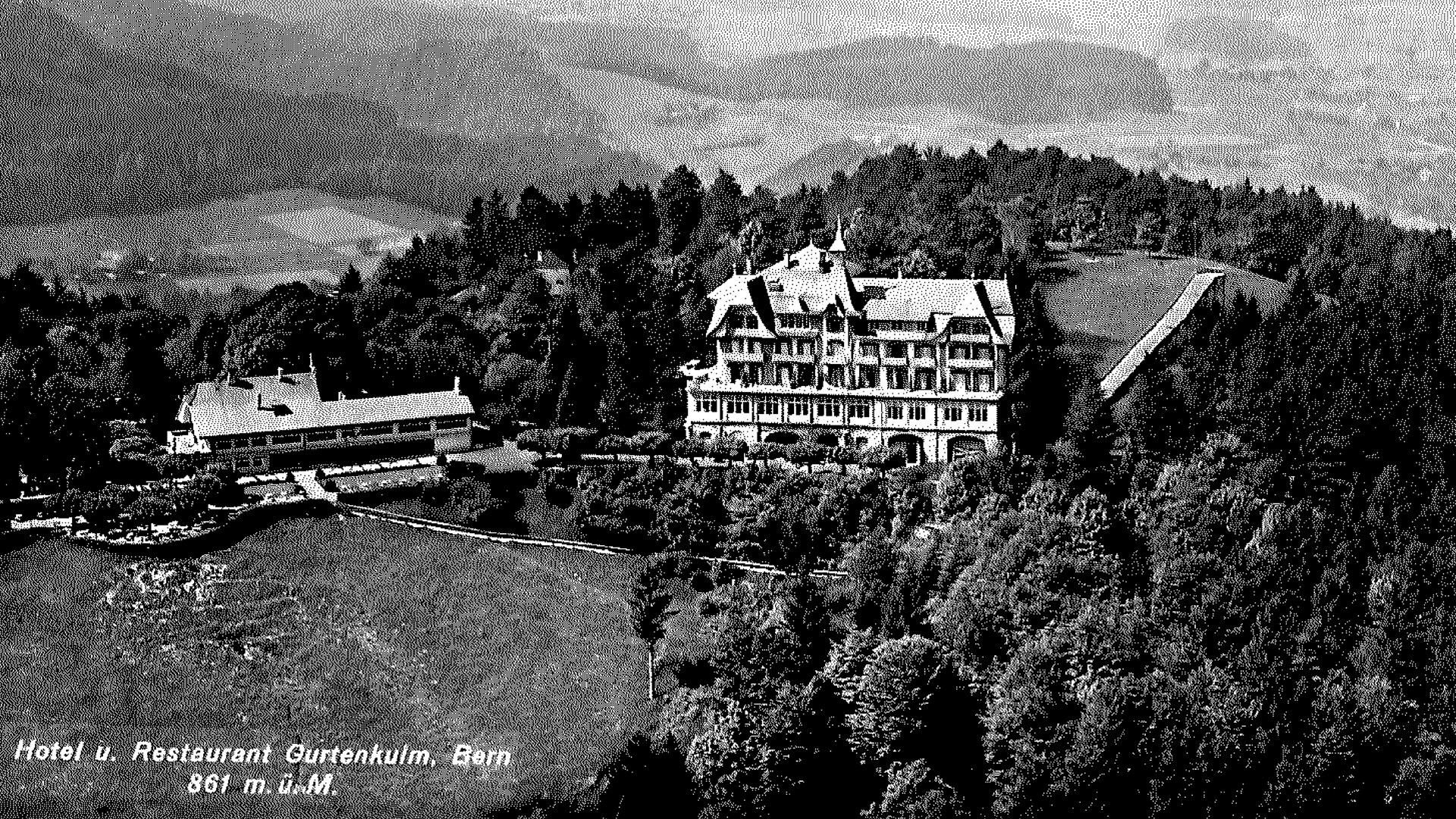
Transport capacity increased by one-third
In 1966, there was another fare increase: the return trip rose from CHF 1.80 to CHF 2.00. In addition, further renovations were carried out and the following measures were implemented: The maximum transport capacity was increased from 850 to 1,350 people per hour, the normal speed during peak hours was increased from 3.5 m/sec. to 5.7 m/sec., the travel time was reduced from five minutes to just 3½ minutes during peak hours, the electronic remote control of the cars allowed for partial one-man operation, and the valley station was completely rebuilt.
The total cost of the renovation was CHF 1,825,000. The city granted an interest-bearing loan of CHF 950,000 and a non-repayable contribution of CHF 524,000. This was the first public funding since the cable car opened.
Lightning strike on August 1
The new opening of the park terrace on the Gurten and the new baby cart track in the children's playground attracted large crowds. On August 1, 1970, a new record attendance of 9,500 people was achieved. A lightning strike near the mountain station caused a brief interruption in service. Thanks to good snow conditions in February and March, the number of passengers carried in 1973 rose to 45,390, the highest annual frequency since the railway was established.
The mountain station was expanded in 1982 to include a reception area and a station buffet in 1984.
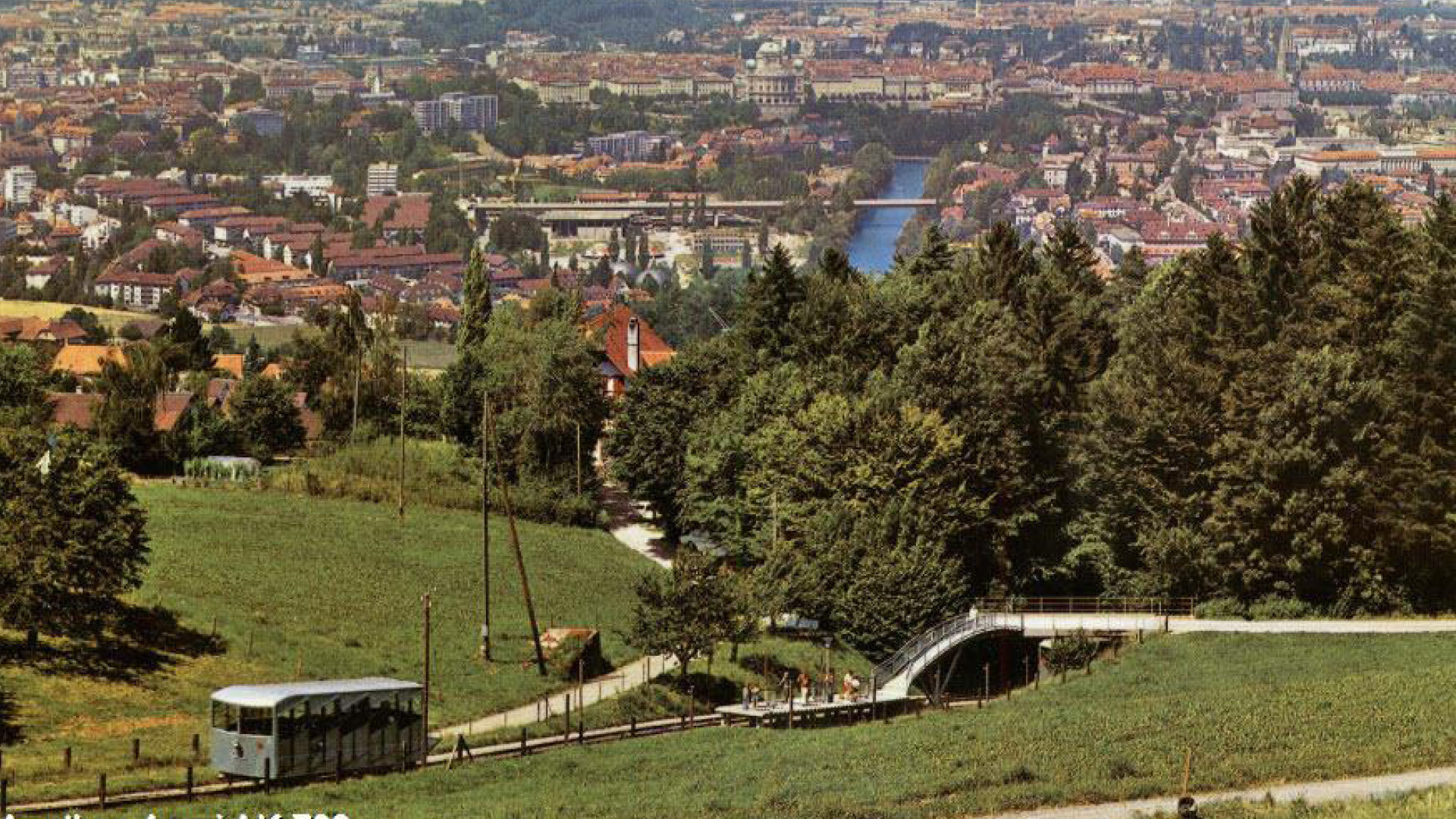
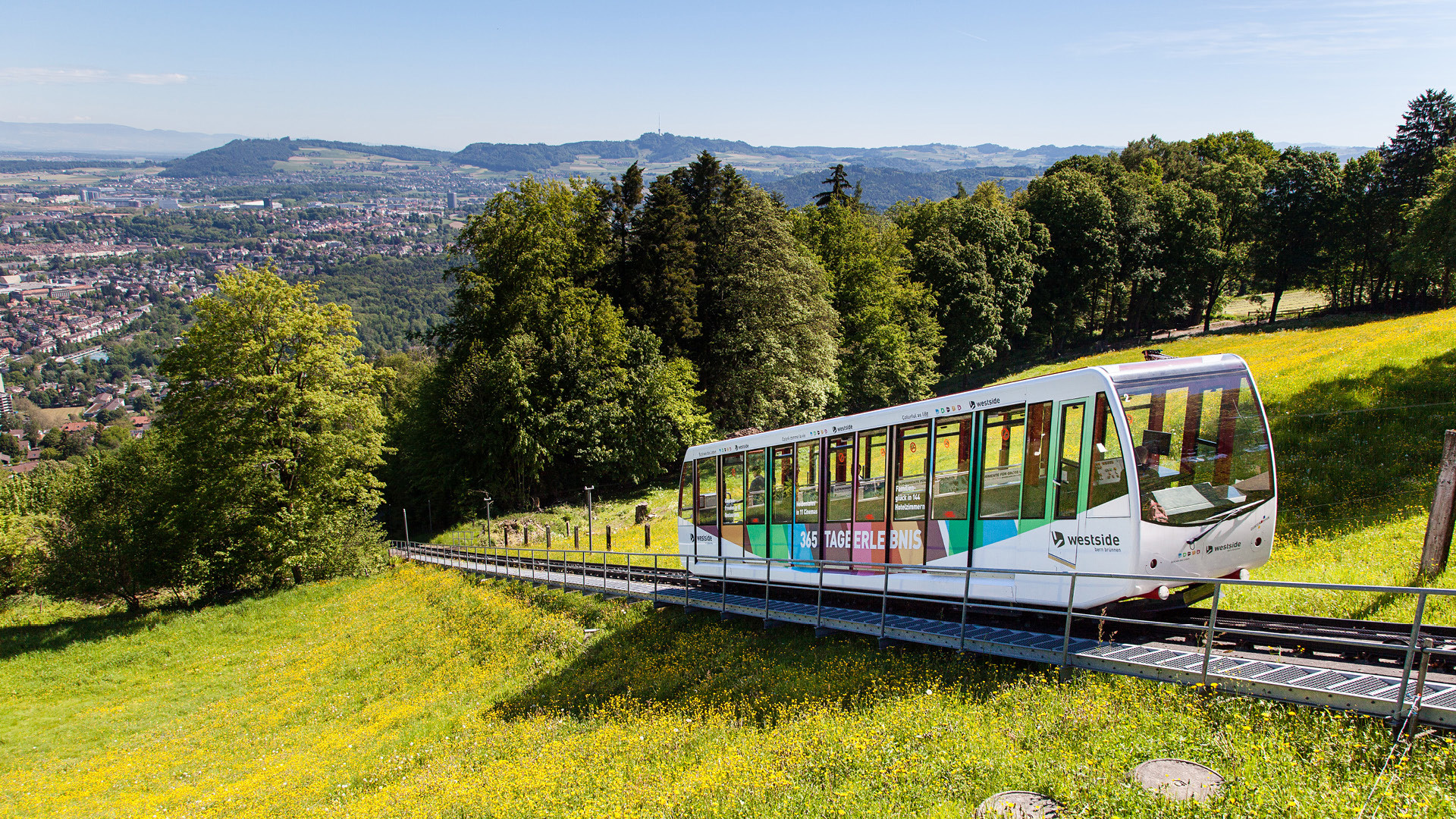
Thanks to Migros
Migros invested in a green park on the Gurten, and 100,000 m2 of space became a new paradise for visitors to the Gurten. The Gurten green park became a place to play, stroll, enjoy culinary delights, hold cultural events, or conduct business meetings. On November 19, 1999, the new «dream mountain» – was opened, featuring a super playground, kids' cars and a miniature railway, basketball hoops, a 9-hole frisbee golf course, new restaurants, a cultural center, and much more.
Snow sports at last again
A second-hand ski lift from Lenker Bergbahnen can be put into operation in 2004 after years of not being used for skiing. Skiing and sledding were possible on 67 days in the first winter alone.
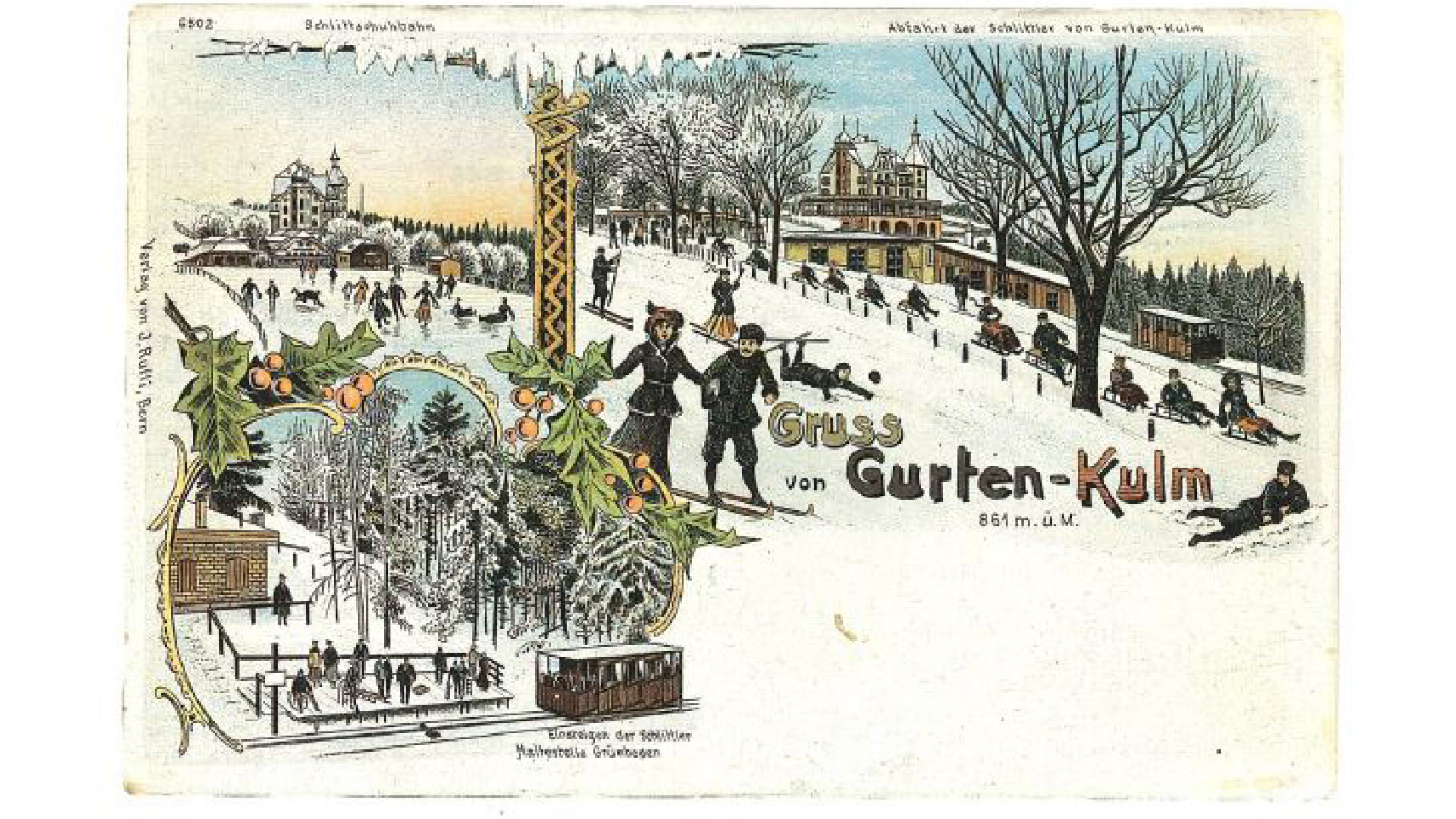
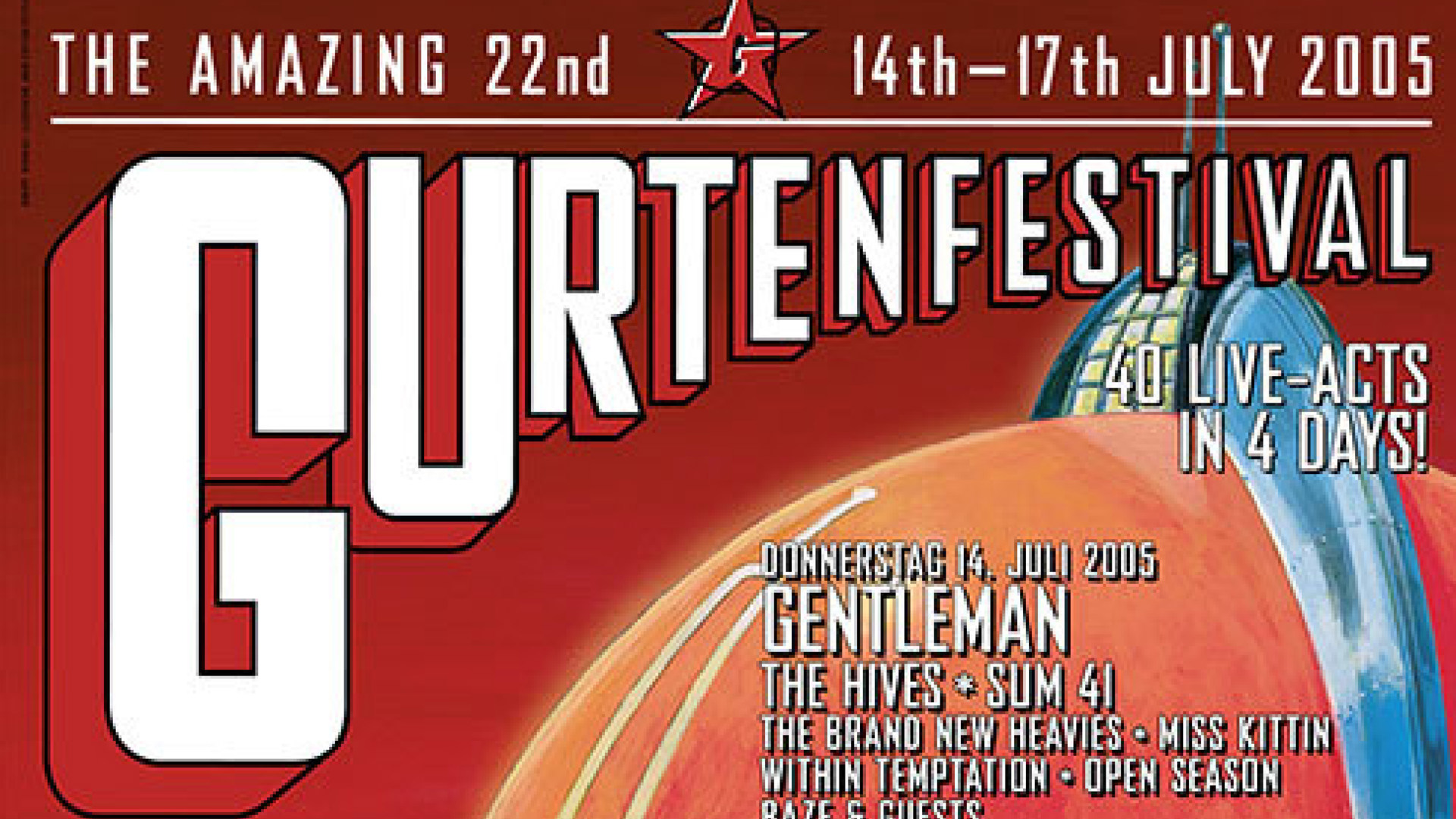
Visitors to the Gurtenfestival
In 2005, the Gurtenfestival took place over four consecutive days for the first time. The Gurtenbahn transported a total of 130,000 people over a period of 96 hours. This meant that almost one-eighth of all passengers were transported during these days in 2005.
A toboggan run for the Gurtenbahn
The toboggan run was opened on May 24, 2016, with a big inauguration celebration, but the facility had to be closed for several days due to heavy rainfall in the days that followed. In its first year of operation, 56,700 runs were recorded.
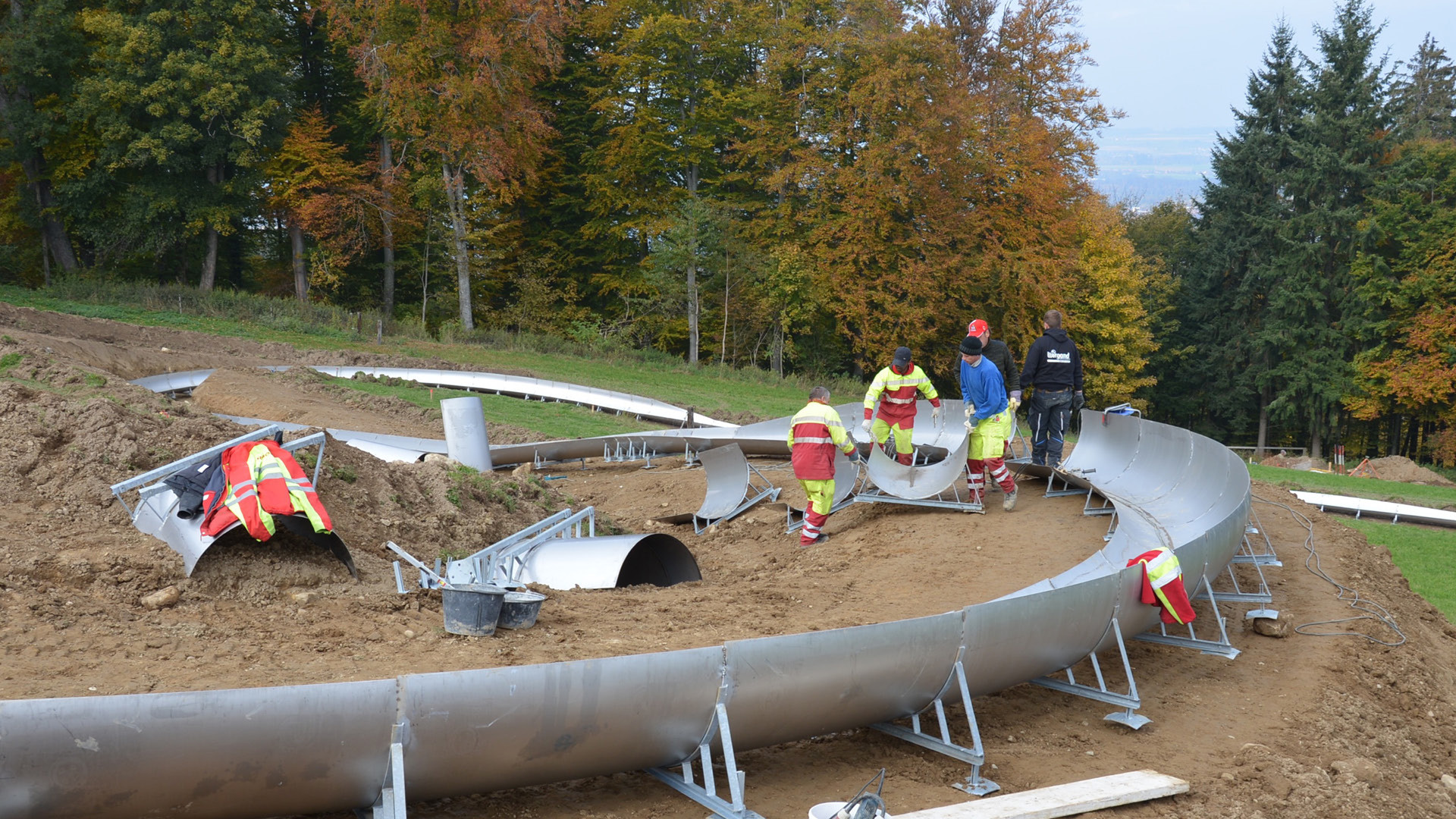
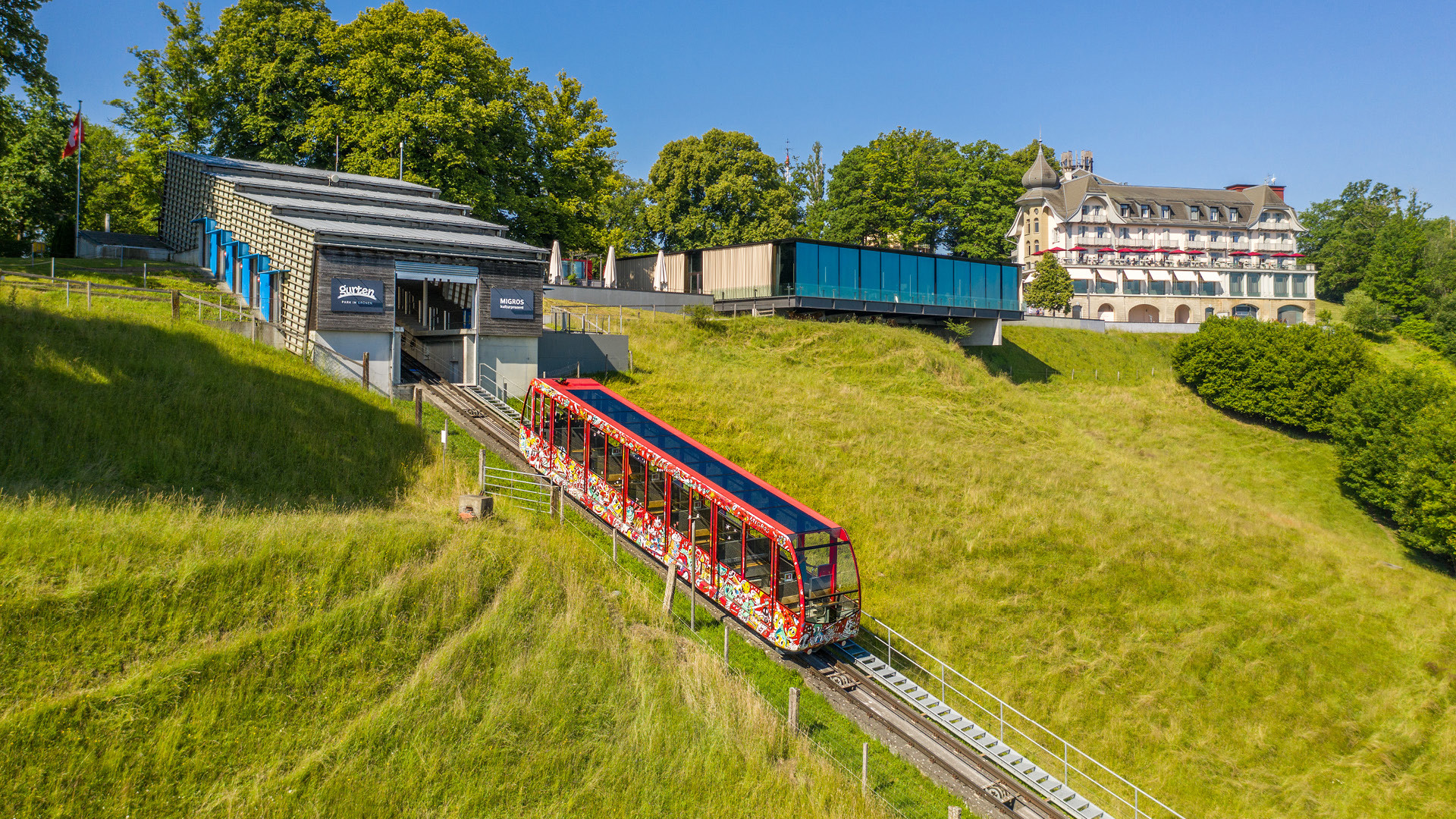
2017 – the year of records
In addition to a new record for the funicular railway, with 1 million passengers transported, the year also saw an increase in transport revenue. The toboggan run closed with a record 74,778 rides.
Just one year later, storm Burglind forced the railway to suspend operations as a precautionary measure. The bike route was severely damaged and had to be closed for an extended period. It reopened on Good Friday, March 30. In April, over 11,000 bikes were transported.
Gurtenbahn Bern AG revamped its image and logo. Even the Gurtenbahn itself got a new look. The artist couple M.S. Bastian and Isabelle L. decorated the Gurtenbahn with their illustrations.
COVID years
On March 14, 2020, the coronavirus lockdown began and the Gurtenbahn was forced to suspend operations for 11 weeks. The railway was only able to resume operations on June 6. During the second lockdown, the Gurtenbahn was granted permission to «operate a ski resort» and was allowed to resume operations in compliance with a protection concept.
It was not until June 6, 2021, with the easing of restrictions by the Federal Council, that the railway was allowed to resume regular service. Since then, the renovated BLS railway station has provided barrier-free access to the Gurten station by public transport.
Due to the cancellation of major events such as the Gurtenfestival and Theater Gurten, fewer people were transported than in previous years.
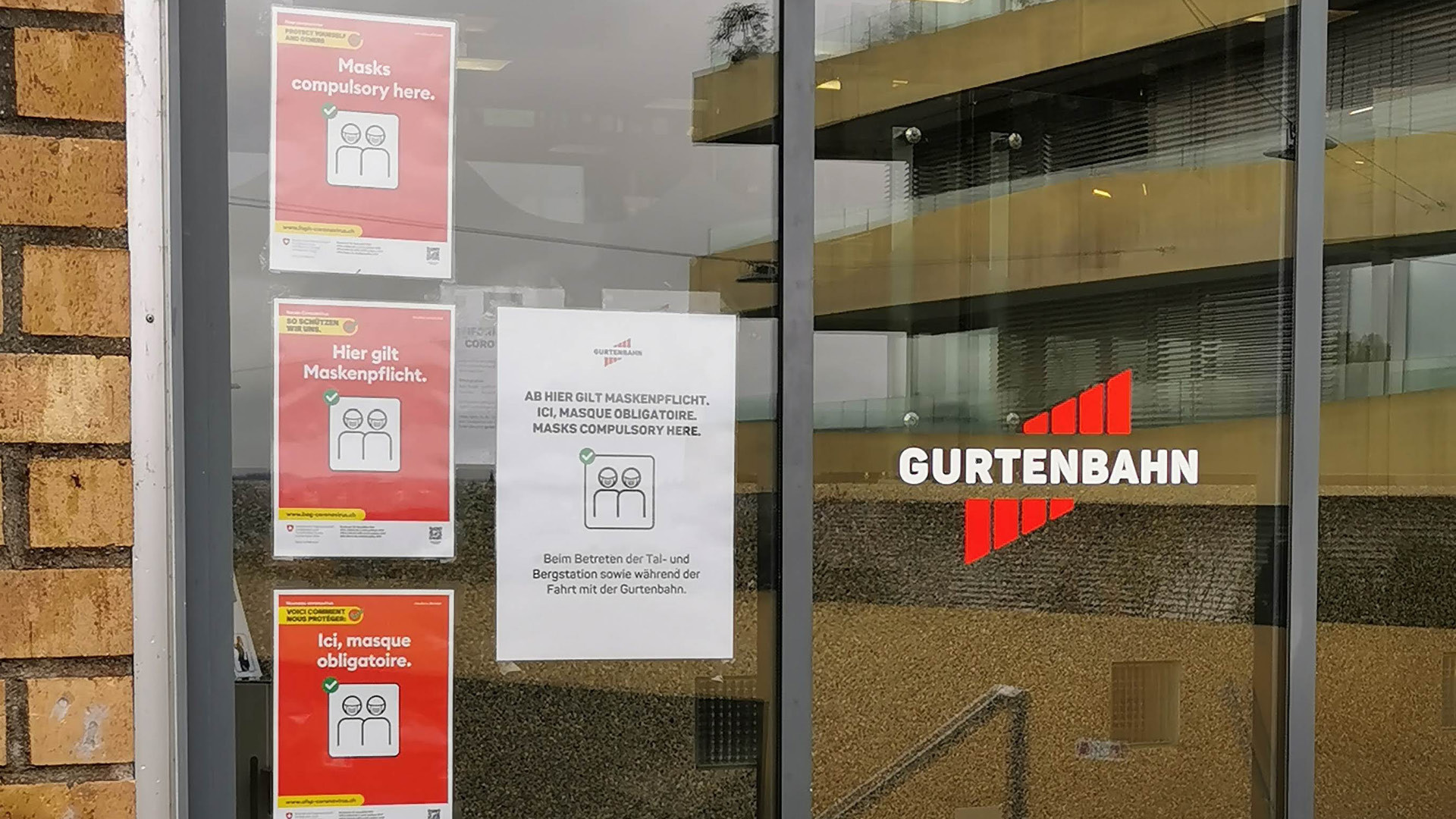
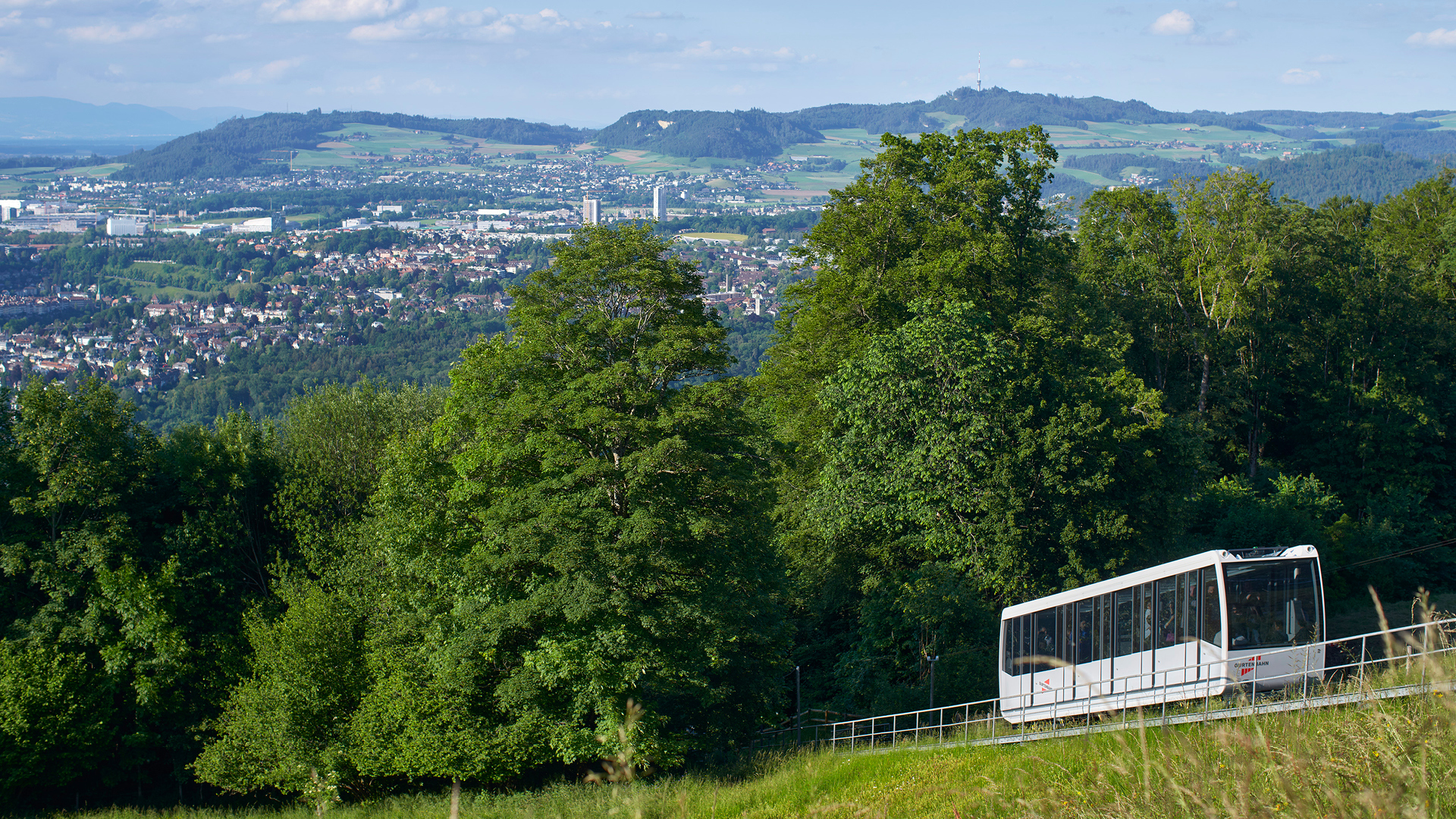
Fourth generation of the Gurtenbahn railway
From January 3, 2024, to May 15, 2024, the valley station underwent energy-efficient renovation and the new Gurtenbahn was built. Since May 16, 2024, the fourth generation of the silvery Gurtenbahn has been transporting guests up Bern's local mountain.
During the renovation, Eurobus transported guests via Gurtendörfli using a replacement bus service.
Further information
Here you will find a detailed list of the most important annual events at Gurtenbahn Bern AG.
Source citation
The images and photos were obtained from the Burgerbibliothek Bern, the archives of Gurten – Park im Grünen, and Gurtenfestival AG.

